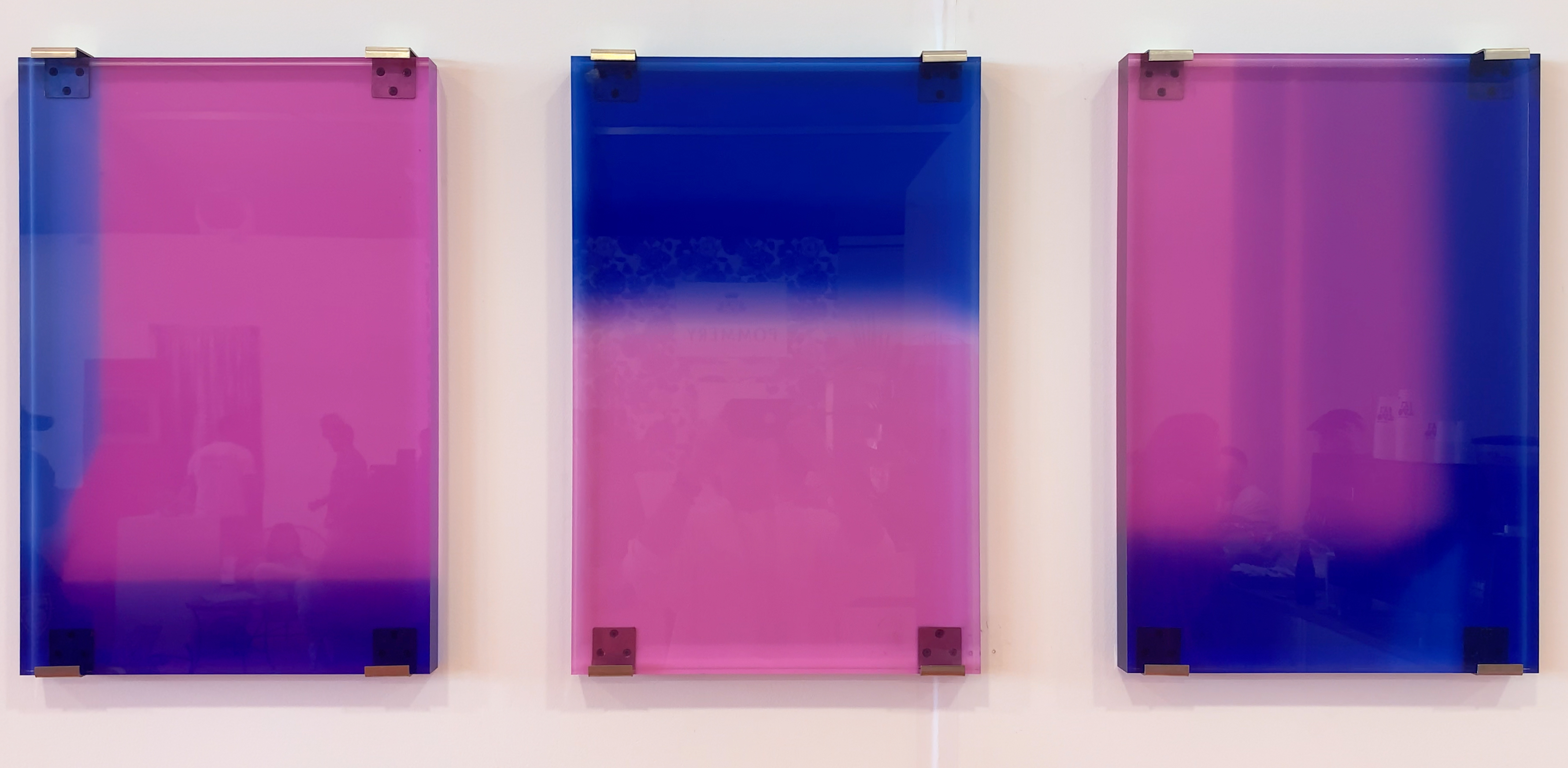


Montage, 2021
Triptych, ultraviolet ink on cast Plexiglas with custom stainless-steel hardware
Each panel: 28 × 18.6 × 1.5 in (71.1 × 42.2 × 3.8 cm)
Total weight 105 lb (35 lb per panel)
Installation view above left and center: Art Basel | Miami, Untitled Art, Miami, FL 2022
Montage, 2021, explores the accelerating dematerialization and entropy of images and image-making. In an expanded approach to mark-making, the forms are generated through physical movements of red, green, and blue light sources—around an exposed digital camera sensor—from varied spatial positions and distances.
The resulting magenta and blue fragments are not digitally composed but arise through optical interaction. Each form is a self-reflexive shadow contour: the internal and external structure of the camera body casting itself back onto the sensor. Red, green, and blue were chosen for their role as the additive primaries of light.
The object dimensions correspond to standard digital photographs, rotated vertically to emphasize their physicality. This reorientation encourages the viewer to perceive them as objects rather than images. Their thickness was selected to heighten each site’s perceptual interaction, and the gap between object and wall directly affects the saturation via affecting the opacity of the object.
The work is tangentially inspired by the Double Slit Experiment—the foundational quantum physics trial that revealed light’s dual nature as both particle and wave. That paradox of image and event is echoed here: the pieces function simultaneously as traces and phenomena.
Finally, the work reflects a multi-generational legacyin real estate and construction. Reoriented horizontally and stacked, the forms resemble bricks; vertically aligned, they become windows. Mounted edge to edge, they form a wall. Their meaning shifts with physical arrangement, just as their formation emerged from the spatial choreography of light and body.